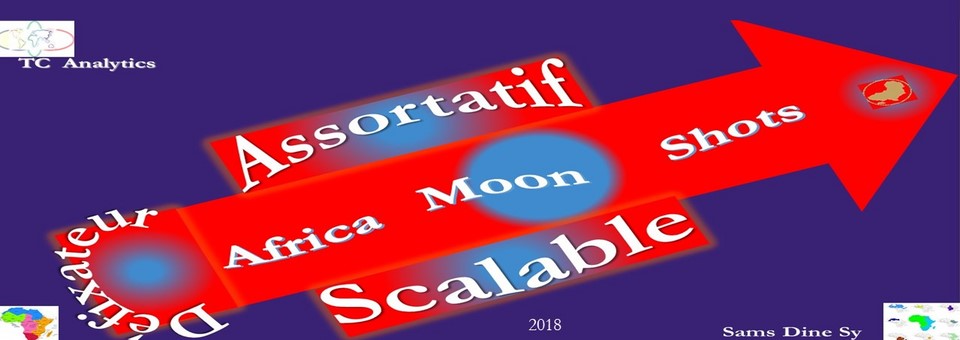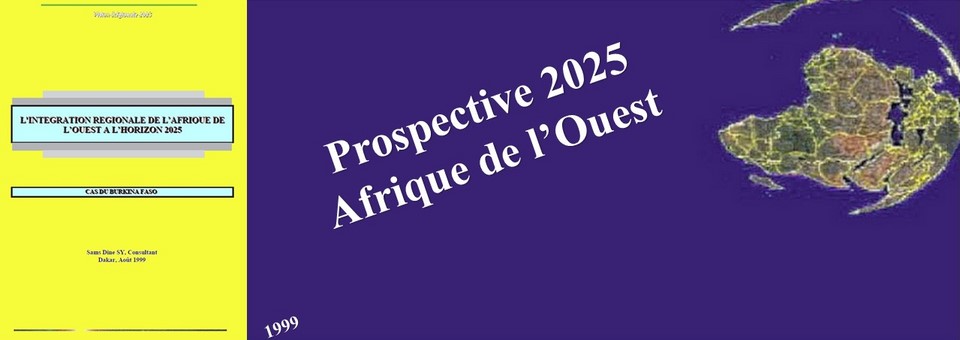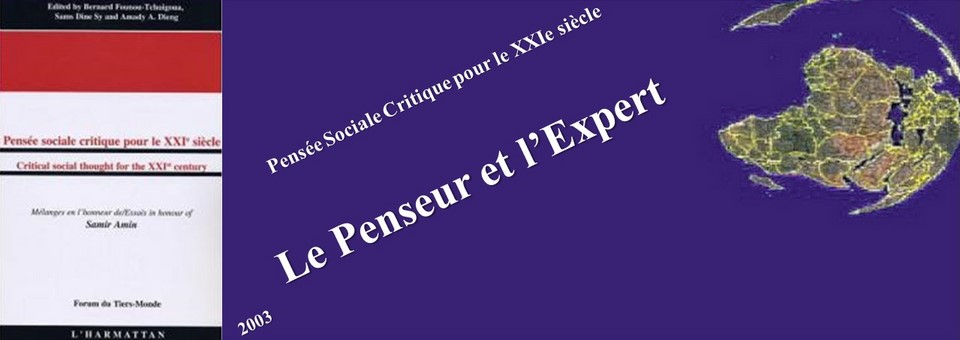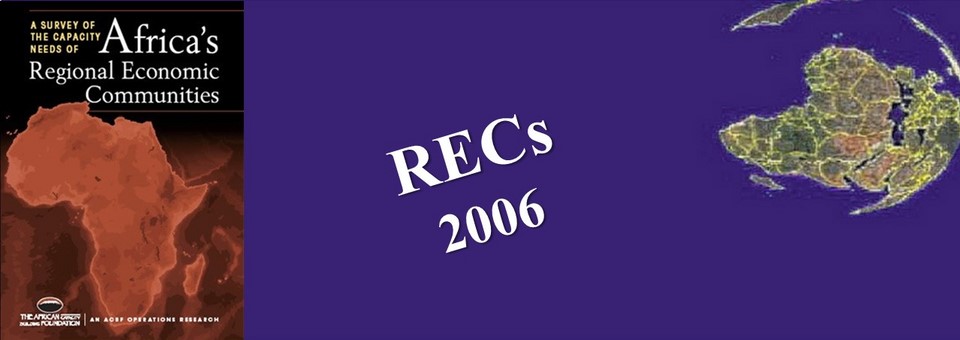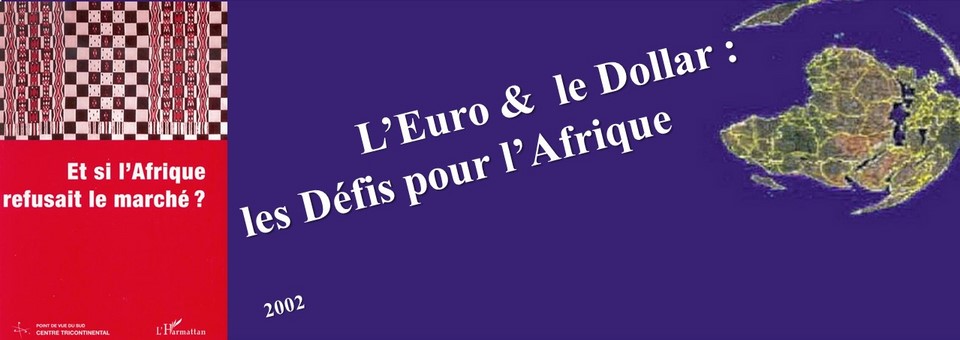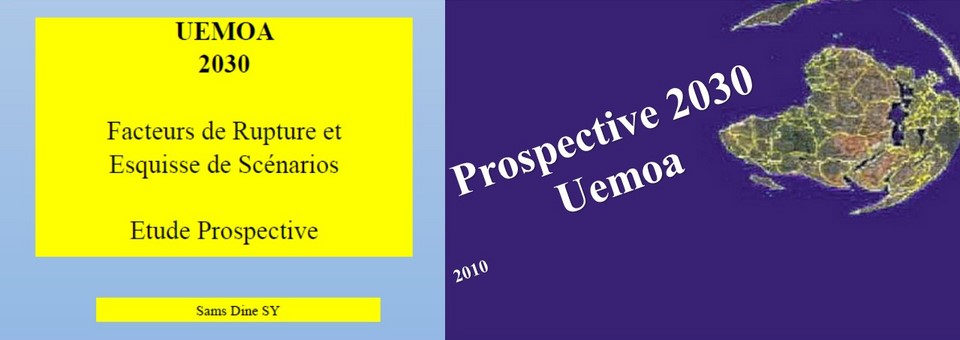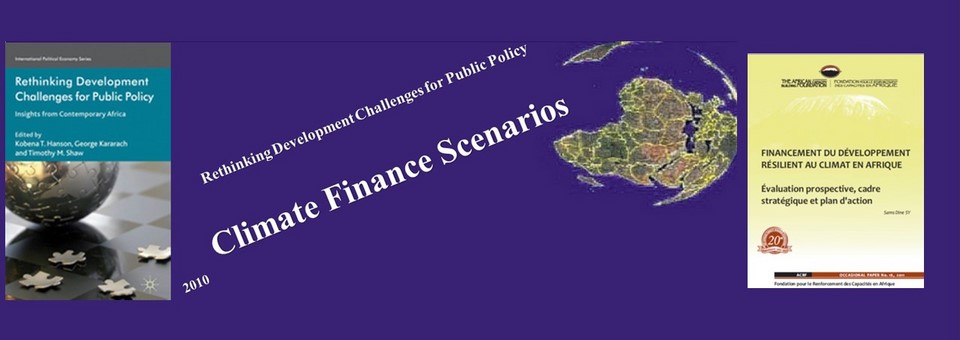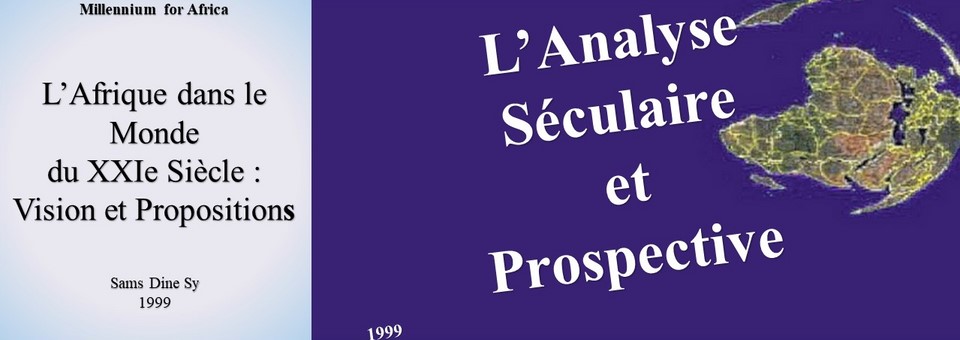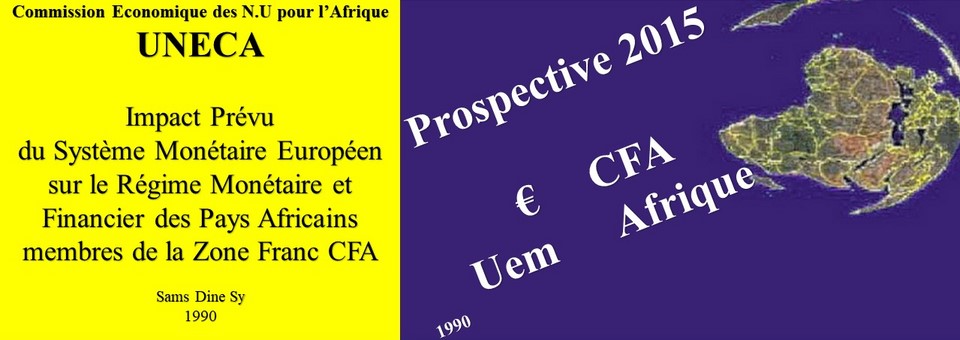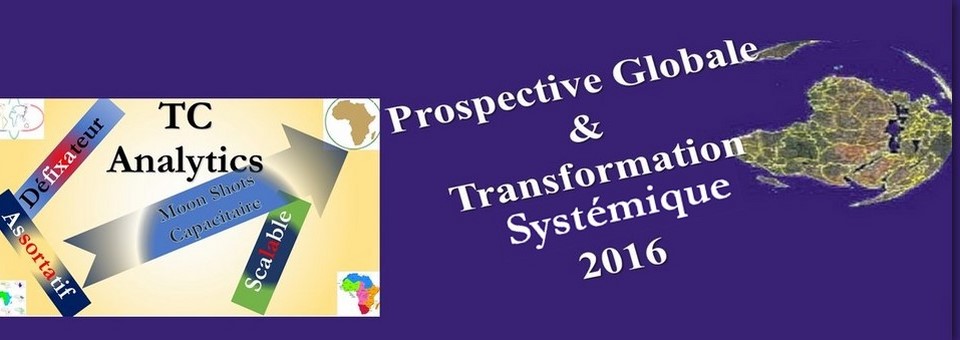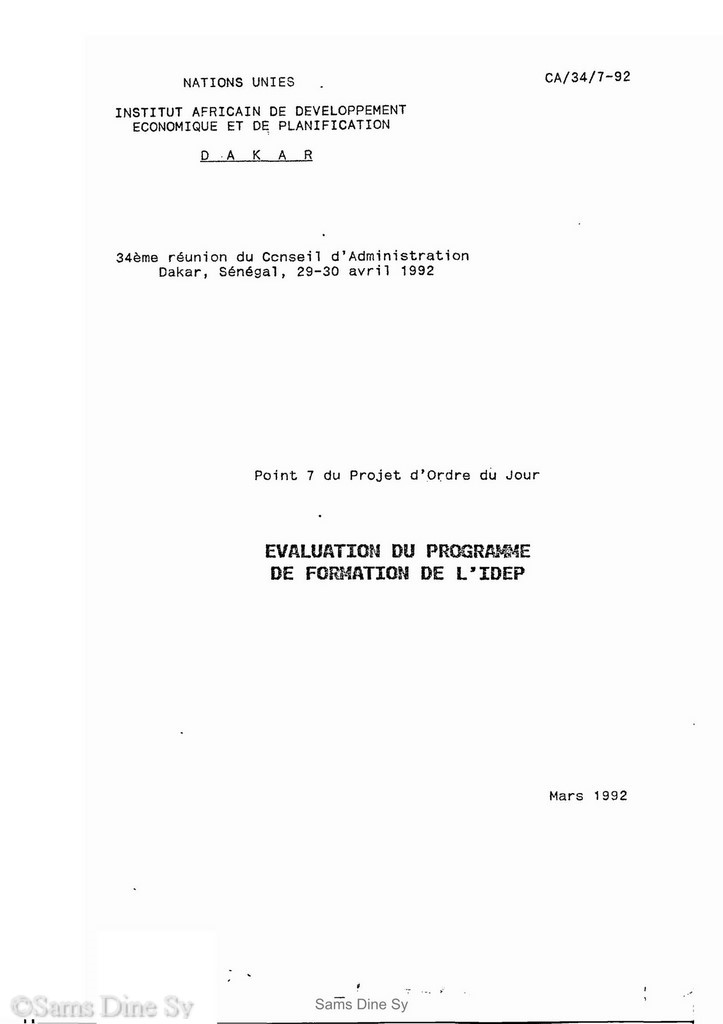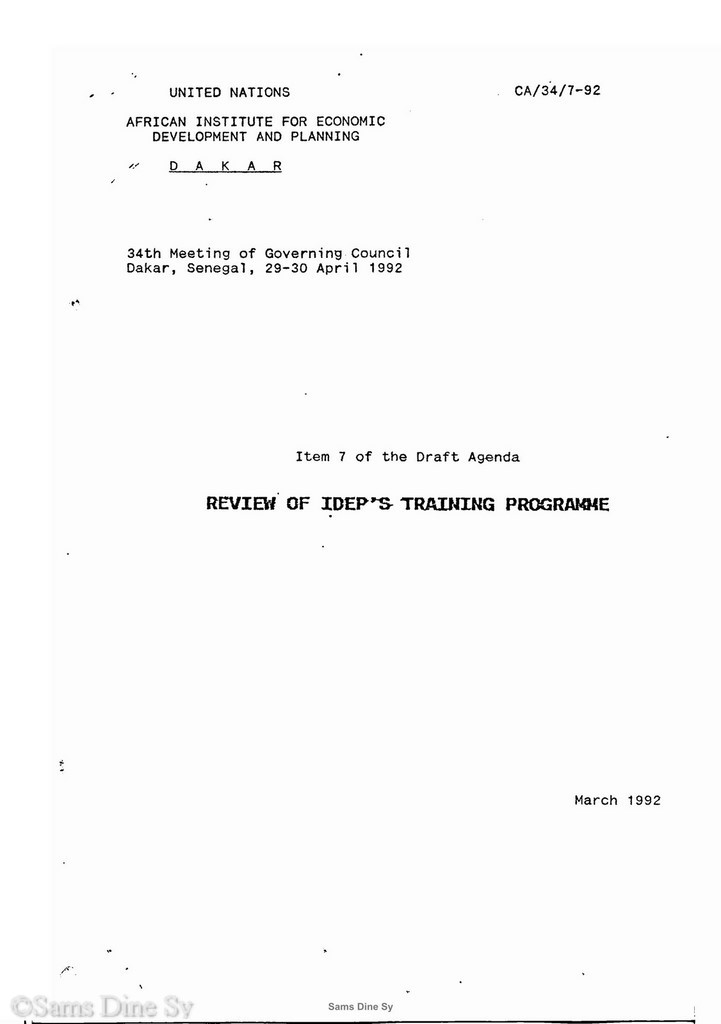POLICY ANALYSIS :
Deployment in AfricaIDEP: Review of the Training Program 1964-1991
Deployment in Africa
FOREWORD
In preparing this report, IDEP has been assisted by two independent consultants, Mr. Sams Dine SY and Professor Oumar BERTE. It is the outcome of desk research, interviews in Dakar, and data collection and processing as well as working sessions at IDEP.
The report is to serve as a basis for reflection on the future of the Training Programme. It analyzes as thoroughly as possible, the evolution and the current situation of the Training Programme from various points of view and makes recommendations on the orientation, duration and structure of a new training programme.
TABLE OF CONTENTS
FOREWORDTERMS OF REFERENCE
SUMMARY
I. FRAMEWORK FOR THE TRAINING PROGRAMME
1. Countries concerned and geographical scope
2. IDEP’s training functions
3. The basic model of the training programme
4. The reference framework
II. TYPES OF TRAINING PROGRAMMES AND THEIR IMPLEMENTATION
1. Some historical landmarks
2. Preparation of the first training programme
3. Training activities before the 1970 reorientation
4. Training through research on development experiences
5. The training programme after the change of statute and orientation in 1977
6. Lessons from the experience
III. THE CURRENT TRAINING PROGRAMME 1987-91
1. The Framework of the Training Programme
1.1. Context
1.2. Preparation of the training programme ....
1.3. Implementation
1.4. Evaluation of the Current Training Programme
2. The Components of the Training Programme ...
2.1. Orientation and objectives
2.2. Structure and content of the training programme
2.3. Implementation of the components of the training programme
IV. PEDAGOGICAL ASPECTS, DIPLOMAS AND CERTIFICATES
1. Pedagogic evaluation of the current training
4.1. Curriculurn
4.2. Teaching methods
4.3. Teaching staff
4.4. Trainees
2. Pedagogic performance
2.1. Effectiveness
2.2-. Efficiency
3. The question of certificates and diplomas
V. FUTURE OF THE TRAINING PROGRAMME
Introduction
1. Weaknesses of the training programme
1.1. Effectiveness
1.2. Efficiency
1.3. Contribution of the training programme to efficiency and effectiveness of IDEP
2. The strong points of the training programme
2.1. Learning capacity
2.2. Factor of African integration
2.3. Symbolic dimension
3. The challenges
3.1. Self-sufficiency of the training programme
3.2. The training programme of a centre of excellence
4. The opportunity
4.1. Africa’s needs in terms of capacity building
4.2. New opportunities for technical cooperation
5. Construction of scenarios
6. Trend scenario
6.1. Assumptions
6.2. Description of results and implications
7. An alternative scenario
7.1. Assumptions
7.2. Description of results and implications
8. Recommendations
9. Desirable changes in the training programme
ANNEXES
INDEX CARDS OF THE 7 TRAINING PROGRAMMES
1964-66
1967-69
1970-71
1972-76
1977-82
1982-86
1987-91
1967-69
1970-71
1972-76
1977-82
1982-86
1987-91
TABLES AND GRAPHS
GRAPHSI.1. The basic model
I.2. The reference framework
I.3. Breakdown of the trend of enrolments as a percentage of the overal1 annual rate ...
TABLES
II.1. Main data on the various types of training programmes
II.2. Generations of programmes : some differences
II.3. Number of training courses or activities
II.4. Participation for the first 15 African countries in the Dakar course during 3 periods
III.1. Evaluation of the current programme
IV.1. Output of the training programme
IV.2. Distribution of enrolments according to diplomas and certificates
